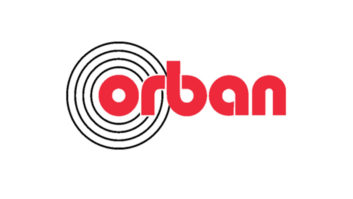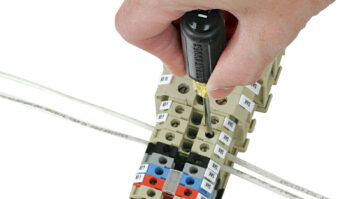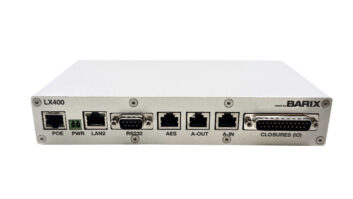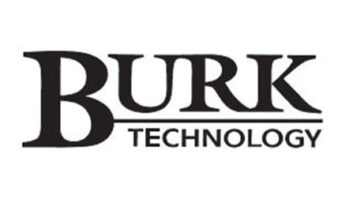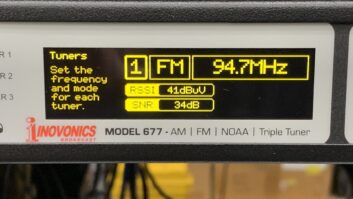Last issue Mark Ward offered a warning to broadcasters to check the phone number of the nearest FAA Flight Service Station.
You’ll recall he needed to report a tower light outage but the number had been changed. Chris Tracy, market chief for Clear Channel’s Springfield, Mass., cluster adds more on this, found on an Internet list.
(click thumbnail)Fig. 1: Quickly determine bolt and nut threads with the Thread Checker.Chris writes that when calling in a NOTAM (Notice to Airmen) of a tower light failure, be persistent to make sure that the notice is posted. Make sure you get the NOTAM number, the date and time issues, and the initials of the person taking the NOTAM.
If your jock staff calls in the failure, make sure your step-by-step instructions include obtaining this information, and notifying you as the CE. Be sure to check that the NOTAM was actually issued by heading to https://www.notams.jcs.mil/.
It’s interesting to note that the site is hosted by the Joint Chiefs of Staff of the Department of Defense.
Enter the three-letter abbreviation for the nearest airfield, preceded with the letter “K.” So for Manchester (MHT), you would enter KMHT. Click the radio button labeled “View NOTAMs” and you should get back all NOTAMs related to that airfield. About halfway down the list should be the tower light NOTAMs.
If your NOTAM is listed, confirm that everything is correct as was reported to the FAA.
Another note: Check the expiration date of the NOTAM. If you don’t see your NOTAM listed, and a reasonable amount of time has passed — say 60 minutes — call the FAA back. Use the NOTAM number you were given earlier and get the issue resolved.
As Mark Ward noted, there have also been significant changes as to how tower lighting failures are reported. This has evolved as a part of the privatization of the whole flight service system. The telephone numbers to the local FFS (Flight Service System) are either no longer in use or will be terminated soon. Some FFS locations have already been shut down.
In its place is a new national number for all tower light and obstruction systems malfunctions and outages, toll free (877) 487-6867. But there is a twist. If the assigned FSS for your area is busy, the call is automatically routed to the next available Flight Specialist throughout the country. So if you’re calling from Maine, you could be connected to a flight specialist in Anchorage.
(click thumbnail)Fig. 2: Silica gel packs are great — until they rip in your toolbox.Because the specialist may be outside your area, it’s important to check the NOTAM on the above-mentioned Web site. Do the legwork now, and don’t wait until the lights fail.
Thanks to Chris Tracy for the added information.
* * *
Larry Lamoray of The Systems Store (www.systemsstore.com) sends a note with a neat device pictured in Fig. 1.
The Thread Checker belongs in every shop and gives you an efficient way to check the size of both metric and standard nuts and bolts.
(click thumbnail)Fig. 3: Keep a butt set handy in your phone closet.It’s easily mounted on a wall, where it’s out of the way, but ready to identify. With the Thread Checker, there are no more crossed threads.
If you haven’t been to the Systems Store Web site, visit. You’ll be amazed at the variety of problem-solvers the Systems Store sells.
* * *
Randy Howard and I must buy our vitamins from the same company.
Randy writes about the perforated plastic or paper containers that hold silica crystals. These packets can be used to deter moisture in toolboxes. The only problem is that if the wrapper gets torn, the little silica beads are now rolling around in the toolbox.
Enter the vitamins.
Randy found a small perforated plastic container in his last bottle of mail order vitamins. The cylinder is about 1 inch long and 3/4-inch in diameter. Because the ends are perforated but the wall of the cylinder is solid, there’s less chance of the container being torn open. The solid wall also provides a means of attachment with either glue or tape to the inside of whatever it��s protecting.
(click thumbnail)Fig. 4: D-rings can also be used in equipment racks.The device is called a “SORB-IT CAN” and is manufactured by S-CPP in Belen, N.M. The humidity absorber protects products from moisture damage during shipping or storage. The company’s site is www.s-cpp.com.
* * *
We typically see D-rings in the phone closet, along with a butt-in set, as seen in Fig. 3. But there’s no reason the D-rings can’t be used inside equipment racks, as shown by Cox Richmond Market Chief Jon Bennett.
One of the biggest advantages of using these rings in racks, Jon says, is that they keep the wiring neat without taking up a lot of room like plastic duct would. Seen in Fig. 4, the D-rings are easily bolted to the rack support to keep wiring neatly routed.









